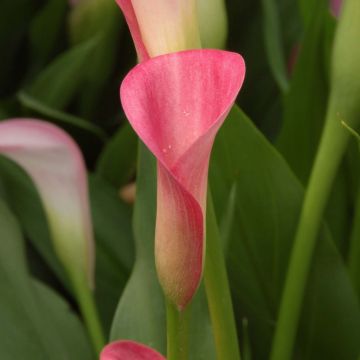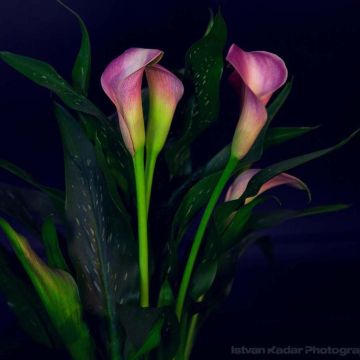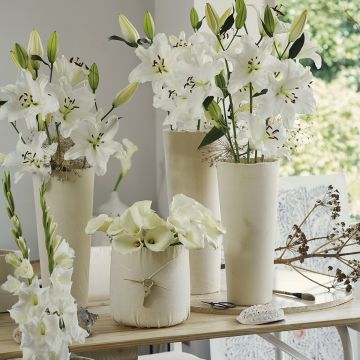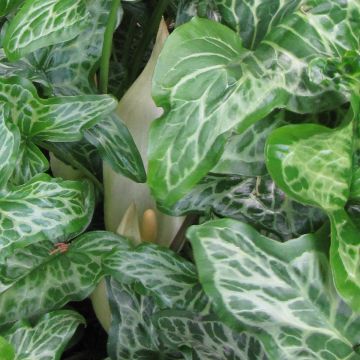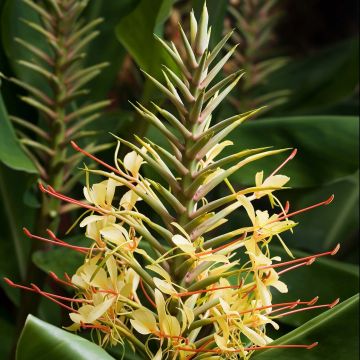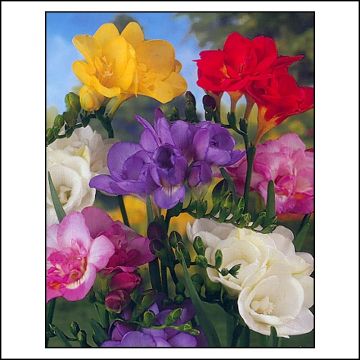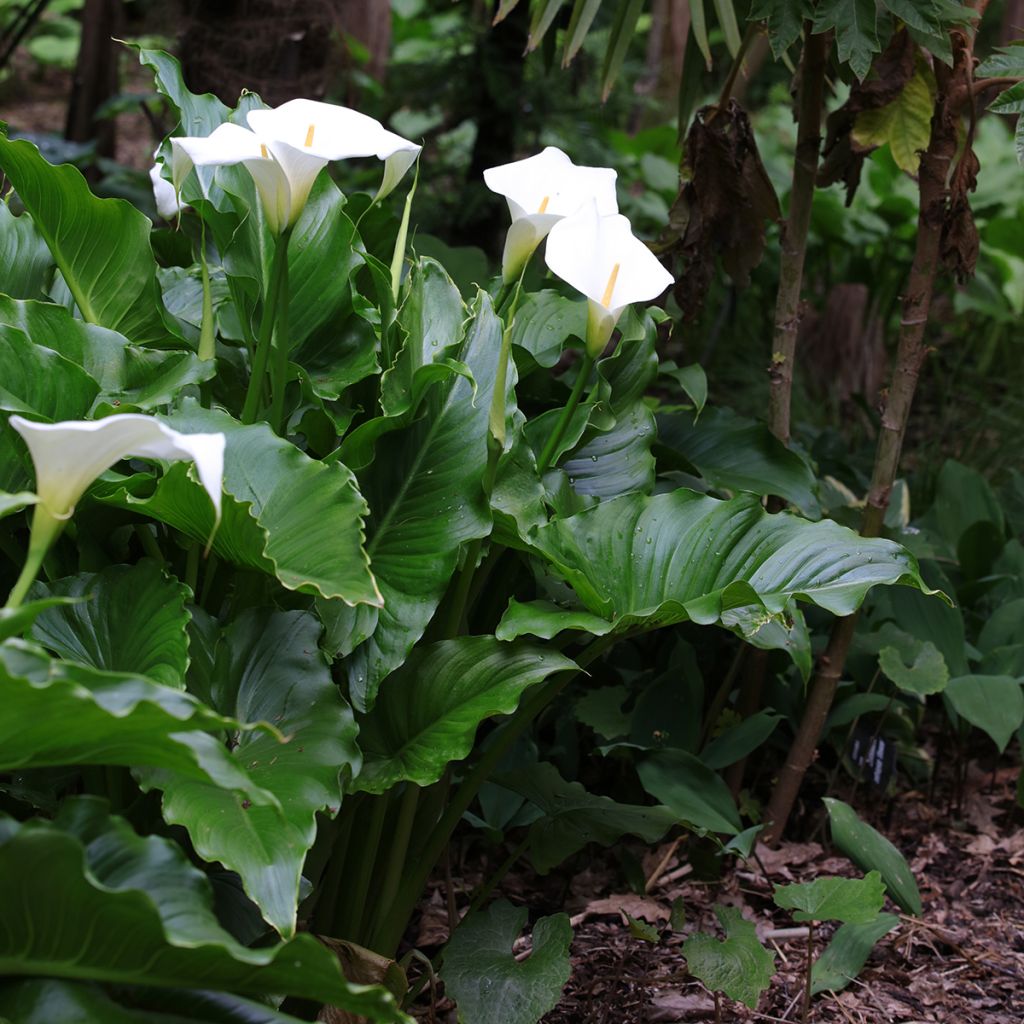

Zantedeschia aethiopica - Calla Lily


Zantedeschia aethiopica - Calla Lily
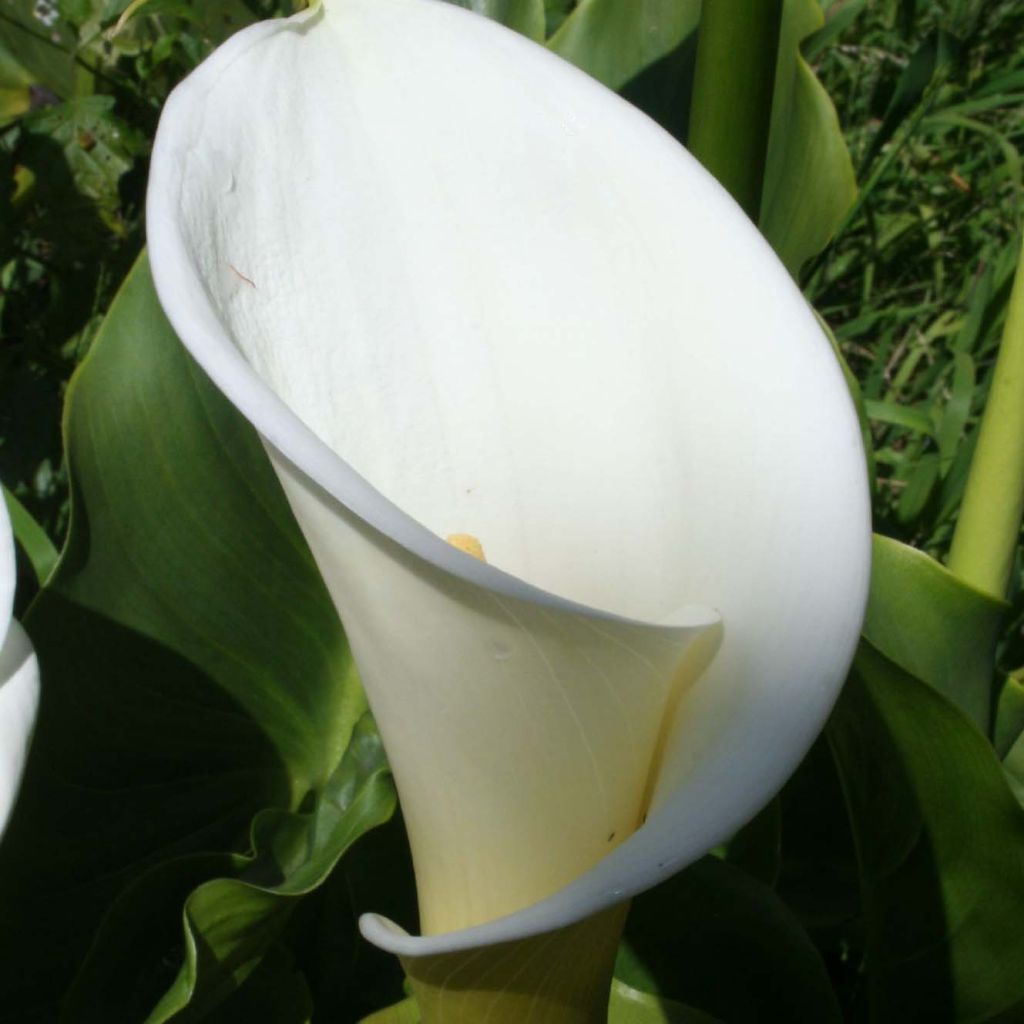

Zantedeschia aethiopica - Calla Lily


Zantedeschia aethiopica - Calla Lily
Zantedeschia aethiopica - Calla Lily
Zantedeschia aethiopica
Arum Lily, Calla Lily
This item cannot be shipped to the selected country
Delivery charge from €5.90
Delivery charge from €5.90
More information
Schedule delivery date,
and select date in basket
This plant carries a 6 months recovery warranty
More information
We guarantee the quality of our plants for a full growing cycle, and will replace at our expense any plant that fails to recover under normal climatic and planting conditions.
From €5.90 for pickup delivery and €6.90 for home delivery
Express home delivery from €8.90.
From €5.90 for pickup delivery and €6.90 for home delivery
Express home delivery from €8.90.
Does this plant fit my garden?
Set up your Plantfit profile →
Description
Calla or Zantedeschia aethiopica is the white arum of florists, a superb perennial plant with tufts of large glossy leaves, whose beautiful white cones with a gentle fragrance are admired in spring. This plant is a rhizomatous perennial native to Africa that can withstand most winters under a thick mulch. Thriving in cool to moist soil, it excels around ponds and makes splendid flowering pots for the terrace. Its pure flowers last a long time in a vase.
Zantedeschia aethiopica, also known as the Ethiopian Arum, is a plant from the arum family native to South Africa, mainly in the provinces of Lesotho and Swaziland, as well as Mozambique. It has spread to East Africa (Malawi, Zambia, Tanzania, Kenya) and has naturalised in the Madeira archipelago, the Azores, and Australia, particularly in Western Australia. In the wild, it is found in wet and periodically flooded areas such as the edges of streams and ponds. It is a semi-aquatic perennial plant with tuberous rhizomes, deciduous to evergreen in winter and summer, depending on the mildness of the climate and the moisture content of the soil.
In spring, beautiful elongated heart-shaped leaves with long petioles emerge from its rhizome, sometimes reaching over 60 cm (24in) in length, forming an opulent spreading clump measuring 60 cm (24in) in width. The plant spreads over time through the production of runner rhizomes. The leaves are shiny and a beautiful dark olive green. It flowers from May to July-August, and can continue for 4 months if the soil remains moist. When the soil dries out in summer, the flowering diminishes, the foliage dries up, and the plant enters dormancy. The cone-shaped flowers can reach a height of 25 cm (10in). They are typical inflorescences of the arum family. Each inflorescence is composed of a spadix, a central rod bearing tiny yellow flowers, surrounded by a large pure white bract called a spathe. The fragrance it emits is as delicate and surprising, evoking a hint of anise and iris.
Zantedeschia aethiopica is the embodiment of elegance in the plant kingdom. From its foliage to its pure white flowers, it impresses with its luxuriant simplicity. This plant, which loves heat and waterlogged soils, even appreciates having its feet in the water during its growth period. It will happily thrive on the banks of water features in mild regions. In ordinary soil, the florist's arum can be enhanced by lighter plants such as the blue flag iris, lady's mantle, or heucheras. A thick mulch placed over its crown will help it withstand winter. This perennial is often planted in large isolated clumps along a path or near an entrance. This plant, which doesn't like severe frost, can be grown in a large pot filled with fertile soil that can be easily stored in winter. Although its cultivation is quite delicate, the Ethiopian arum will reward you with the timeless beauty of its flowers, on the terrace in a pot or in the garden. As a cut flower, its traditional companions are lilies and white roses.
Report an error about the product description
Zantedeschia aethiopica - Calla Lily in pictures
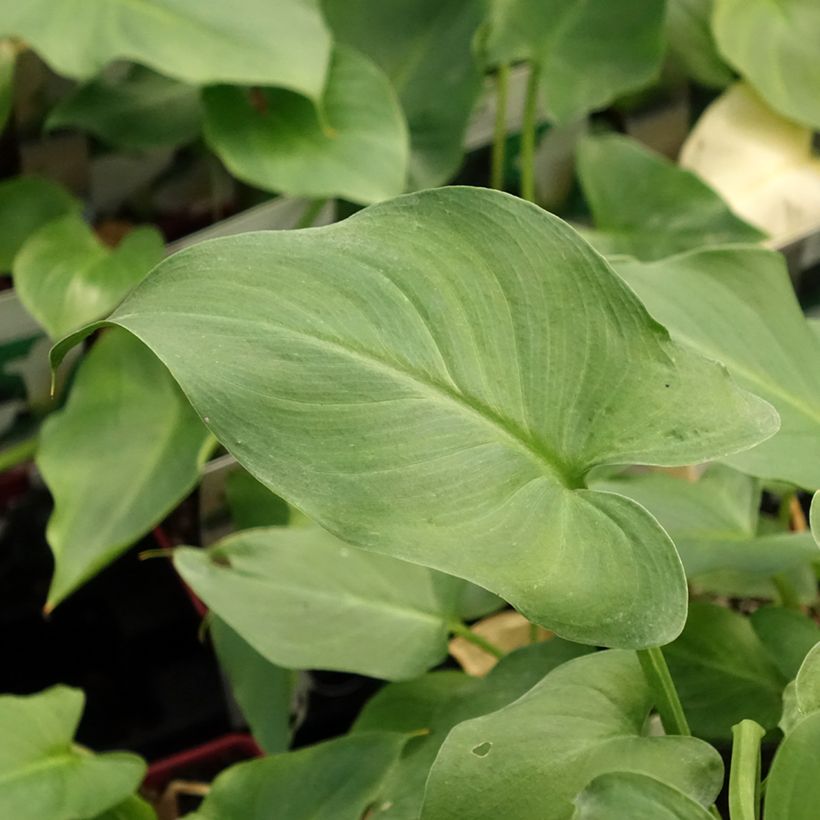

Plant habit
Flowering
Foliage
Botanical data
Zantedeschia
aethiopica
Araceae
Arum Lily, Calla Lily
South Africa
Other Arums
Planting and care
Plant your bulbs from March to April, at a depth of 12 cm (5in), spaced 15 cm (6in) apart, preferably in moist, or even damp, soil. Apply organic fertiliser at planting time and at least once a year. Cultivating them in large pots is possible, as long as you ensure regular watering to keep the soil moist, and provide fertiliser every 2 months during growth. Mulch them at the first signs of cold weather, as they are susceptible to severe frost. If in pots, store them away during winter. Over a few years, they will form beautiful flower-filled clumps from May to August. You can trim the foliage after the first frost.
Planting period
Intended location
Care
-
, onOrder confirmed
Reply from on Promesse de fleurs
Bulbs to grow in pots
Haven't found what you were looking for?
Hardiness is the lowest winter temperature a plant can endure without suffering serious damage or even dying. However, hardiness is affected by location (a sheltered area, such as a patio), protection (winter cover) and soil type (hardiness is improved by well-drained soil).

Photo Sharing Terms & Conditions
In order to encourage gardeners to interact and share their experiences, Promesse de fleurs offers various media enabling content to be uploaded onto its Site - in particular via the ‘Photo sharing’ module.
The User agrees to refrain from:
- Posting any content that is illegal, prejudicial, insulting, racist, inciteful to hatred, revisionist, contrary to public decency, that infringes on privacy or on the privacy rights of third parties, in particular the publicity rights of persons and goods, intellectual property rights, or the right to privacy.
- Submitting content on behalf of a third party;
- Impersonate the identity of a third party and/or publish any personal information about a third party;
In general, the User undertakes to refrain from any unethical behaviour.
All Content (in particular text, comments, files, images, photos, videos, creative works, etc.), which may be subject to property or intellectual property rights, image or other private rights, shall remain the property of the User, subject to the limited rights granted by the terms of the licence granted by Promesse de fleurs as stated below. Users are at liberty to publish or not to publish such Content on the Site, notably via the ‘Photo Sharing’ facility, and accept that this Content shall be made public and freely accessible, notably on the Internet.
Users further acknowledge, undertake to have ,and guarantee that they hold all necessary rights and permissions to publish such material on the Site, in particular with regard to the legislation in force pertaining to any privacy, property, intellectual property, image, or contractual rights, or rights of any other nature. By publishing such Content on the Site, Users acknowledge accepting full liability as publishers of the Content within the meaning of the law, and grant Promesse de fleurs, free of charge, an inclusive, worldwide licence for the said Content for the entire duration of its publication, including all reproduction, representation, up/downloading, displaying, performing, transmission, and storage rights.
Users also grant permission for their name to be linked to the Content and accept that this link may not always be made available.
By engaging in posting material, Users consent to their Content becoming automatically accessible on the Internet, in particular on other sites and/or blogs and/or web pages of the Promesse de fleurs site, including in particular social pages and the Promesse de fleurs catalogue.
Users may secure the removal of entrusted content free of charge by issuing a simple request via our contact form.
The flowering period indicated on our website applies to countries and regions located in USDA zone 8 (France, the United Kingdom, Ireland, the Netherlands, etc.)
It will vary according to where you live:
- In zones 9 to 10 (Italy, Spain, Greece, etc.), flowering will occur about 2 to 4 weeks earlier.
- In zones 6 to 7 (Germany, Poland, Slovenia, and lower mountainous regions), flowering will be delayed by 2 to 3 weeks.
- In zone 5 (Central Europe, Scandinavia), blooming will be delayed by 3 to 5 weeks.
In temperate climates, pruning of spring-flowering shrubs (forsythia, spireas, etc.) should be done just after flowering.
Pruning of summer-flowering shrubs (Indian Lilac, Perovskia, etc.) can be done in winter or spring.
In cold regions as well as with frost-sensitive plants, avoid pruning too early when severe frosts may still occur.
The planting period indicated on our website applies to countries and regions located in USDA zone 8 (France, United Kingdom, Ireland, Netherlands).
It will vary according to where you live:
- In Mediterranean zones (Marseille, Madrid, Milan, etc.), autumn and winter are the best planting periods.
- In continental zones (Strasbourg, Munich, Vienna, etc.), delay planting by 2 to 3 weeks in spring and bring it forward by 2 to 4 weeks in autumn.
- In mountainous regions (the Alps, Pyrenees, Carpathians, etc.), it is best to plant in late spring (May-June) or late summer (August-September).
The harvesting period indicated on our website applies to countries and regions in USDA zone 8 (France, England, Ireland, the Netherlands).
In colder areas (Scandinavia, Poland, Austria...) fruit and vegetable harvests are likely to be delayed by 3-4 weeks.
In warmer areas (Italy, Spain, Greece, etc.), harvesting will probably take place earlier, depending on weather conditions.
The sowing periods indicated on our website apply to countries and regions within USDA Zone 8 (France, UK, Ireland, Netherlands).
In colder areas (Scandinavia, Poland, Austria...), delay any outdoor sowing by 3-4 weeks, or sow under glass.
In warmer climes (Italy, Spain, Greece, etc.), bring outdoor sowing forward by a few weeks.



































